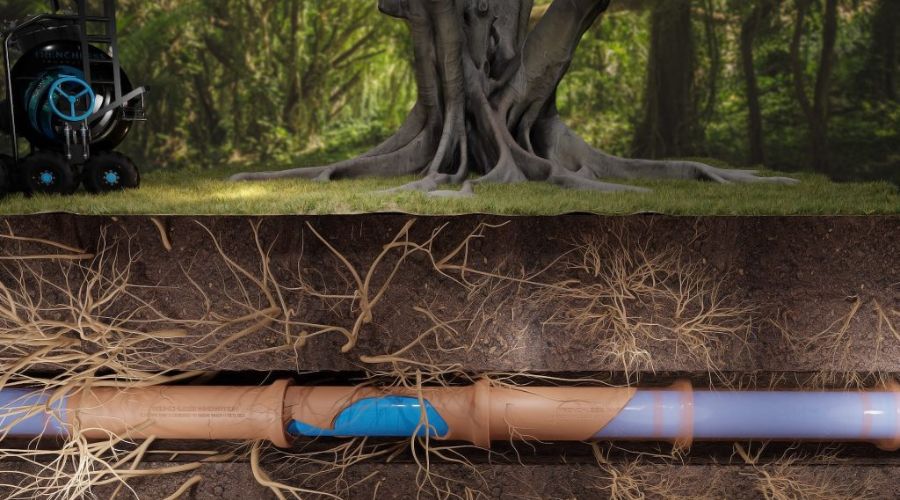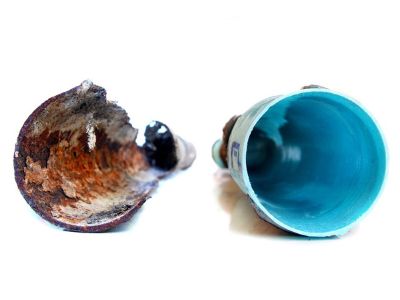
What Is Trenchless Repair?
A leak may only need a tightened valve or patched pipe on a good day. On a bad day, however, a leak may require a plumber to dig below the home’s lawn or driveway to find the problem. This does more than destroy years and years of faithful lawn maintenance; it can lead to long and extensive plumbing repairs.
Thankfully, trenchless pipe repair methods are available to make these underground pipe repairs easier. Instead of digging deep trenches, plumbers can employ a variety of cheaper and faster methods. With trenchless pipe repair, a plumber can dig straight to the source of the problem and fix a chronic leak more efficiently. But what exactly does trenchless repair entail?
What Are the Main Types of Trenchless Repair?
 In general, there are three main types of trenchless pipe repair methods:
In general, there are three main types of trenchless pipe repair methods:
- Pipe bursting. First, the plumber will locate the source of a pipe leak. Then, using a bursting heading tool, they’ll push aside the old pipe and replace it with a new one. It also increases the pipe’s diameters, allowing for more generous water flow.
- Cured-in-place pipelining (CIPP). Here, a plumber will slide an epoxy liner into a damaged pipe. The epoxy fills in any leaks, cracks, or gaps that affect the water system’s functions. A plumber may suggest a different method if a damaged pipe chronically has issues; in that instance, replacing the pipe may be better than CIPP.
- Slip lining. This method’s been around since the 1940s––and there’s a good reason why it’s stuck around. Like CIPP, a plumber locates a damaged pipe and slips a new liner inside. The liner’s usually made of plastic, and the plumber only needs to dig two small holes to fix the problem.
What Issues Can Trenchless Pipe Repairs Fix?
A plumber may suggest trenchless pipe repair if:
- The damaged pipe is beneath a lawn or pavement. Trenchless pipe repair is ideal when a damaged pipe is beneath an already-existing structure, such as a driveway. This non-invasive procedure does not destroy large sections of lawn and lets the plumber “get in and get out” quickly.
- An issue has only happened once. A plumber will not suggest trenchless repairs if a pipe constantly has problems. Instead, they may recommend replacing the line or soldering a leak shut.
- A pipe has a certain material. Trenchless pipe repair is better for some types of pipes than others. For instance, a plumber may employ this method if a line is made of clay, plastic, lead, or cast iron.
While trenchless pipe repair is a great fix for many plumbing issues, it should be left to a professional. They can use their years of experience, resources, and insights to fix a problem as quickly (and efficiently) as possible.
What Are the Three Main Benefits of Trenchless Pipe Replacement?
 The three main benefits of trenchless pipe repairs include:
The three main benefits of trenchless pipe repairs include:
- It’s non-invasive. Nobody wants to look out the window and see their front lawn destroyed by invasive repairs. Trenchless repair requires only a few shallow holes to find and fix a problem.
- They last a long time. Some methods, like CIPP, make a damaged pipe as good as new. On average, a pipe can last anywhere from 30 to 100 years, depending on its material.
- It’s cost-effective. Not only are trenchless pipe repairs typically cheaper than their traditional counterparts, but they reduce how much homeowners have to spend on landscaping and other cosmetic measures after the repair.
About JD Precision Plumbing Services
JD Precision Plumbing Services has over a decade of experience serving the community of Spring, TX, and the surrounding areas. They provide upfront pricing, customer education, financing, and a transparent process. Call them today for plumbing services in Spring, TX.

